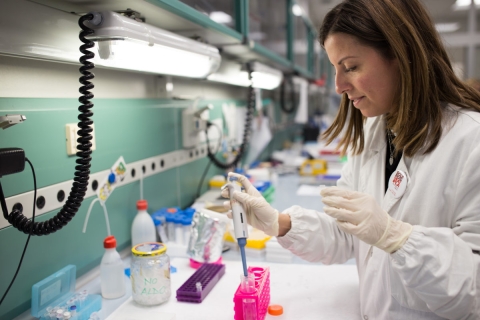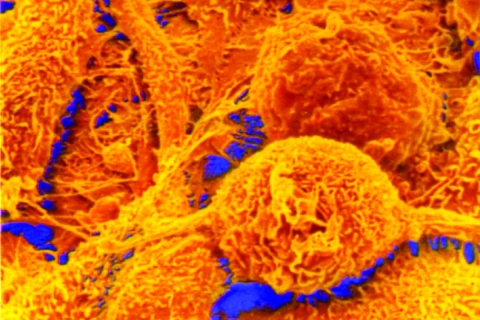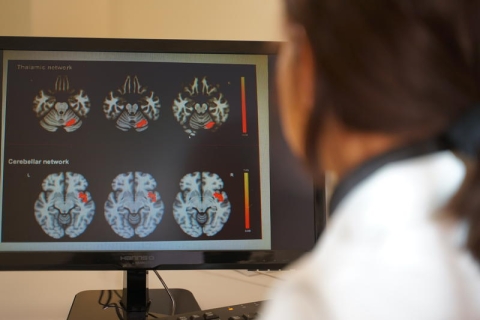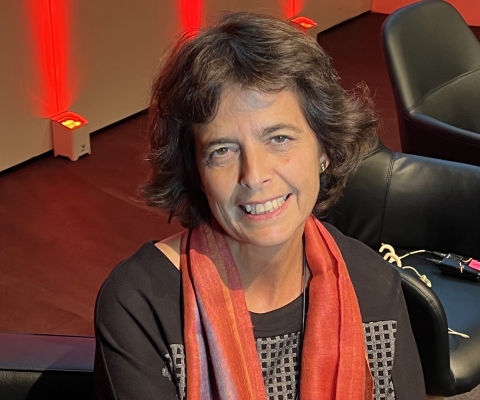Identifying the prevalence of CCSVI in patients suffering from MS
The study starts on December 30, 2010 after a long period dedicated to work out an accurate scientific reference protocol, on the training, to obtain the authorization from Ethic Committees and Clinical Centers and recruit a large number of participants. It ends almost two years later, in September 2012.
The identikit. First multicentric epidemiological study, the largest performed to date. 35 clinical centers involved throughout the nation. It was conducted to study the prevalence of CCSVI in people with multiple sclerosis (compared to the prevalence in healthy volunteers and in other neurodegenerative diseases) making use of the Color Doppler ultrasound technique (ECD).
The study was entirely promoted and funded by the Italian Multiple Sclerosis Association through its Foundation FIMS, with an out-of-notice budget of about 1 and a half million euros.
Training of certified sonologists
A total of 26 sonologists were trained and assigned to diagnostic examination, to ensure that the exam would be performed exactly as outlined in the basic and advanced protocol.
Sonologists with “on site” experience and at least 500 Doppler exams per year, for at least two years, were entrusted with the training. Experience include having published articles in journals with documented impact factor during the last 5 years, consolidated experience as readers at national and international Congress and refresher courses organized by scientific societies. Each recruited operator had to pass a practical test certified by the chairman of both Italian Neurosonology Societies (SINSEC and SINV).
Information accuracy and completeness.
The sample: the population survey is the largest so far analyzed in this field. 1767 patients examined, of which 1165 with MS, 376 healthy controls and 226 people with other neurodegenerative diseases.
Multicentricity is the fundamental characteristics. The association of a condition with a disease should be always observed, cannot depend on a single person or on a single machine. Many centers should take part in a study aimed at understanding with scientifically evidence whether certain phenomena are related to a certain disease.
Another qualifying aspect of CoSMo is the use of a centralized, blind reading performed by international experts (see below).
In addition, all examinations were recorded and made available. This guarantees that data is checked and provides evidence of scientific rigor, and a potential for a closer examination.
Test reading procedure: the value of central analysis
The local sonologist examines the patient sent to him by the neurologist not knowing if this patient is healthy, or is affected by multiple sclerosis or another neurological disease.
Based on this 'blind' analysis, the same sonologist draws up and sends a report to the coordinating centre along with examination images. The coordinating centre, in turn, using a computerized system, sends random video clips of the exam to one of the three expert sonologists of the central reading commission.
The central expert uses a total blind testing, i.e. without knowing where the exam comes from or who underwent it (healthy control, patient affected by multiple sclerosis or another neurological disorder). Then he draws up his assessments along with diagnostic conclusions without being influenced by an encounter with the patient examined.
The coordinating Centre checks if there is a match between the two reports made by the experimenter sonologist of the peripheral centre and by the expert sonologist of the central reading commission. If opinions coincide, the report is declared final.
On the contrary, if reports do not coincide, the test is sent to the other two expert readers of the reading commission, each of whom made a report. The final diagnosis is drawn up according to the agreement of the three expert sonologists.
The CoSMo results summarize local and central readings.
The double blinded examination mechanism guaranteed the absolute accuracy of the exam and of the eventually diagnosis of CCSVI, normalizing the variability of the reading made by the participating centres.
The three central readers of the study are Prof. Erwin Stolz, one of the leading international experts in MS, Neurology Clinic, Giessen, Germany, Dr Massimo Del Sette – Chairman of SINSEC , Italian Society of Neurosonology and Cerebral Hemodynamics - and Dr. Giovanni Malferrari, Chairman of SINV - Italian Interdisciplinary Neurovascular Society.
Reliability of CoSMo results: local readings and centralized reading
The above-mentioned CoSMo conclusive data summarizes the central and local readings, highlights the presence of CCSVI in 3% of patients with MS, in 2% of healthy controls, 3% of patients with other neurological diseases.
However, if the total local readings are considered, the presence of CCSVI is observed in 16% of patients with MS, 15% of people with other diseases and in 12% of healthy controls. The differences are not significant.
It appears that, even with different values at local level compared to final CoSMo data, CCSVI always occurs with similar rates in all the three groups studied (MS, healthy controls, other neurodegenerative disorders). This means that there is no correlation between CCSVI and MS, from all viewpoint that CoSMo results are observed.
The characteristics of the reading
The CoSMo study consists in a basic exam, lasting about two hours, to evaluate the presence or absence of CCSVI. Approx. 80 images and clips were gathered and filed per patient during the basic exam .
In the second part of the CoSMo protocol, that number of images and clips almost doubled (about 160). On average, there are about 120 images and video clips per exam.
Central readers analyzed both basic and advanced exams. Useful information were obtained for a more accurate identification of the criteria needed to diagnose CCSVI. Data obtained using the extended protocol are currently being analysed.









